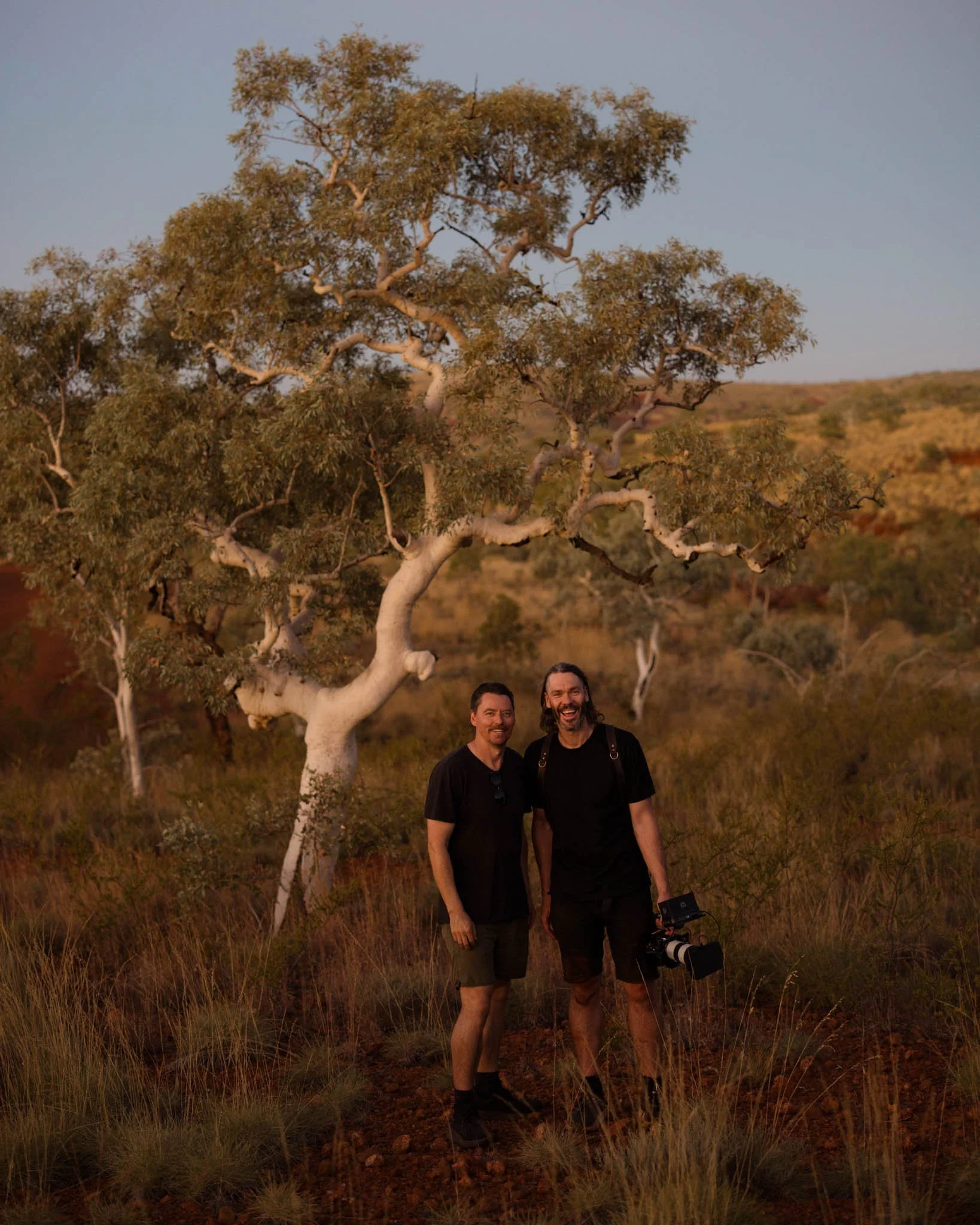4,000 Kilometres of Connection: Reflections from the Pilbara
(L-R) Scott Lahiff & Luke Gemmill
In May 2025, Ripple Narratives spent 11 days travelling through the heart of Western Australia’s Pilbara region. What unfolded was more than a production trip. It was a journey across red dirt roads and into the heart of stories rarely seen, yet deeply felt.
We covered more than 4,000 kilometres, crossing through communities in Port Hedland, Dampier, Karratha, Roebourne, Warralong, Jigalong, and as far inland as Karijini National Park. Much of that travel was off the bitumen, along long stretches of unsealed, dusty roads that coated the gear, the crew, and every fibre of our being in the red ochre that defines this Country.
We were there to tell stories. Not just of individuals, but of the systems and challenges that shape life in the Pilbara. And the strength that carries people through them.
Long Days with Big Purpose
Each day averaged 16 hours. We filmed under blistering sun, in makeshift clinics, out the back of community centres, and along roadside stopovers. The work was fast-paced but sensitive, balancing the need to get the shot with the responsibility to hold space for truth.
In Port Hedland, we filmed interviews with doctors from Wirraka Maya Health Services who spoke of the preventable chronic diseases affecting Aboriginal communities. But the root cause isn’t medical. It’s structural. Housing is largely controlled by mining companies, with private rent averaging $1,400 per week. Public housing is almost non-existent. This leads to overcrowding, infections, and cycles of poor health. The result is young people growing up with preventable illness in one of the richest resource regions in the world.
Stories like these matter. They need to be seen. Not buried in statistics, but told through human eyes and lived experience.
Welcome in Every Town
Everywhere we went, we were welcomed warmly. From local staff to community members, there was a quiet generosity in how people opened up to us. Not just for the camera, but in everyday interactions.
To build trust, we gave something back. In each community, we offered free family portraits printed on the spot using our portable printer. It became a beautiful point of connection. People gathered, smiled, shared stories, and walked away with something tangible. A moment of pride and togetherness captured forever.
Consent, Country and Cultural Protocol
Telling stories in these spaces requires more than just cameras and consent forms. It requires deep cultural responsibility. Before entering Karijini National Park and other culturally significant areas, we consulted with the Department of Biodiversity, Conservation and Attractions (DBCA) along with Traditional Owner groups including Banjima (BINTAC), Yinhawangka (YAC), and Eastern Guruma (EGAC).
We were not guided directly by Elders on this trip, but we moved with respect. We always sought permission and never took access for granted.
Why We Went
Each project had a common purpose. To shine a light on the people working to keep their communities strong, and to help address critical talent shortages across health, housing, education, and social services in the Pilbara.
Ripple Narratives was engaged to help organisations recruit professionals to the region. But this wasn’t just about job ads. It was about showing the human side of the work. What it looks like. What it feels like.
Because these aren’t just roles. They’re relationships. They’re community. They’re legacy.
What the Pilbara Taught Us
This journey reminded us of the privilege and responsibility of holding the camera.
It showed us that remote communities don’t need rescuing. They need listening. They need investment and space to tell their own stories.
At Ripple Narratives, we’re not here to extract stories. We’re here to amplify them with care, collaboration, and clarity.
If someone asked what it’s really like working in remote Aboriginal communities, we’d say this:
It’s incredibly rewarding. It’s confronting. It’s emotionally powerful. And it’s deeply, undeniably beautiful.

